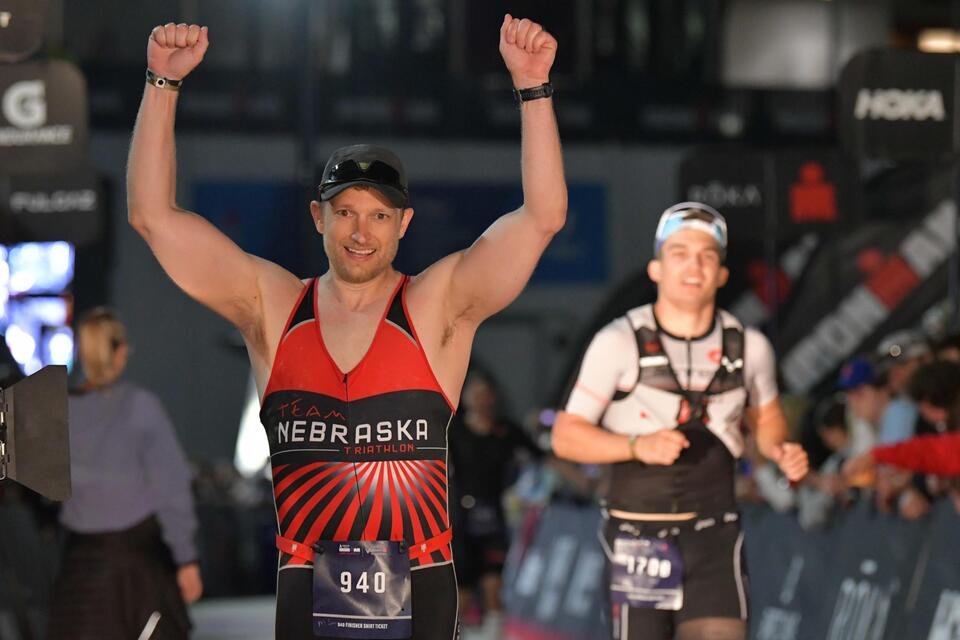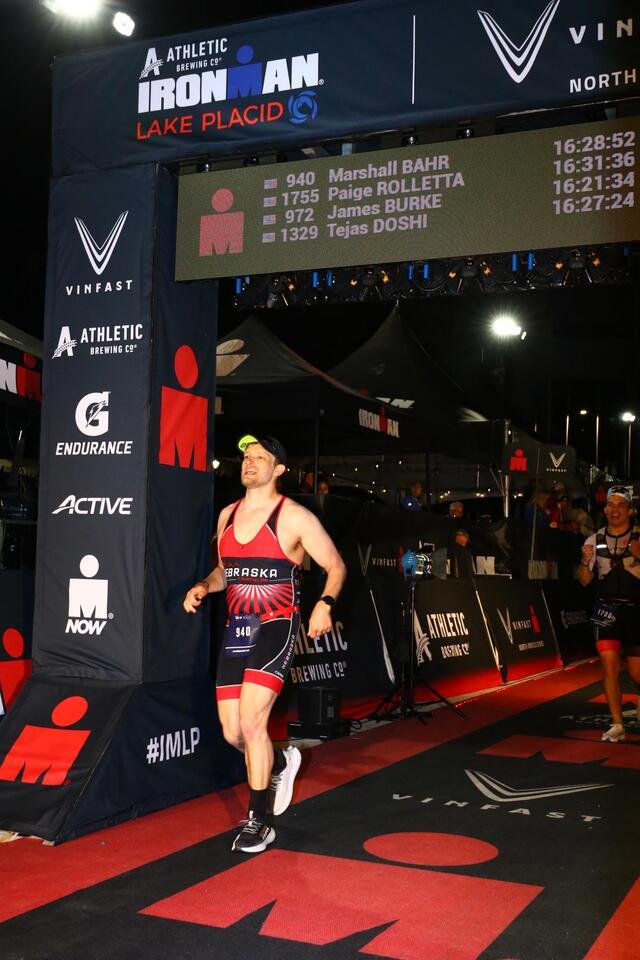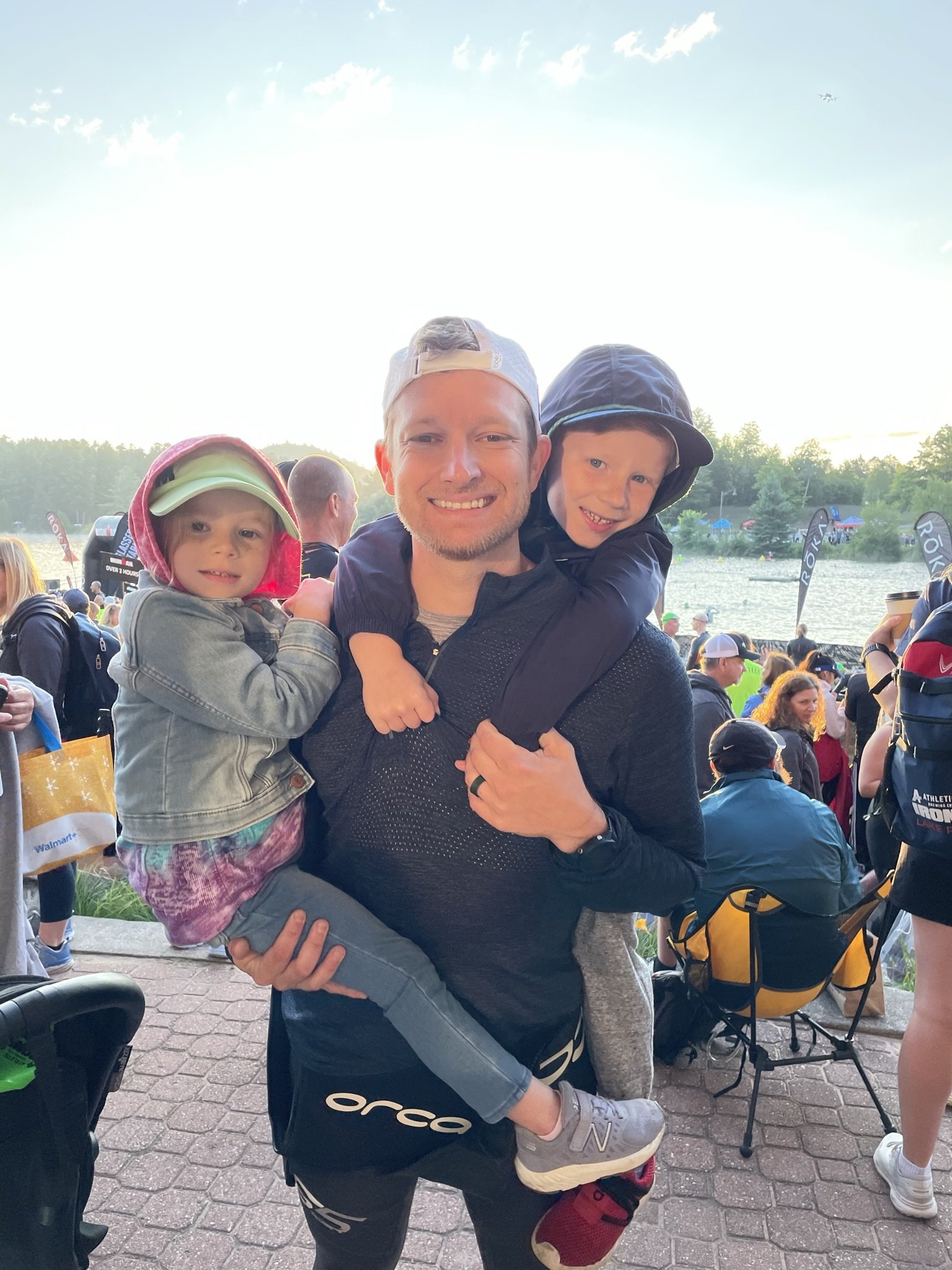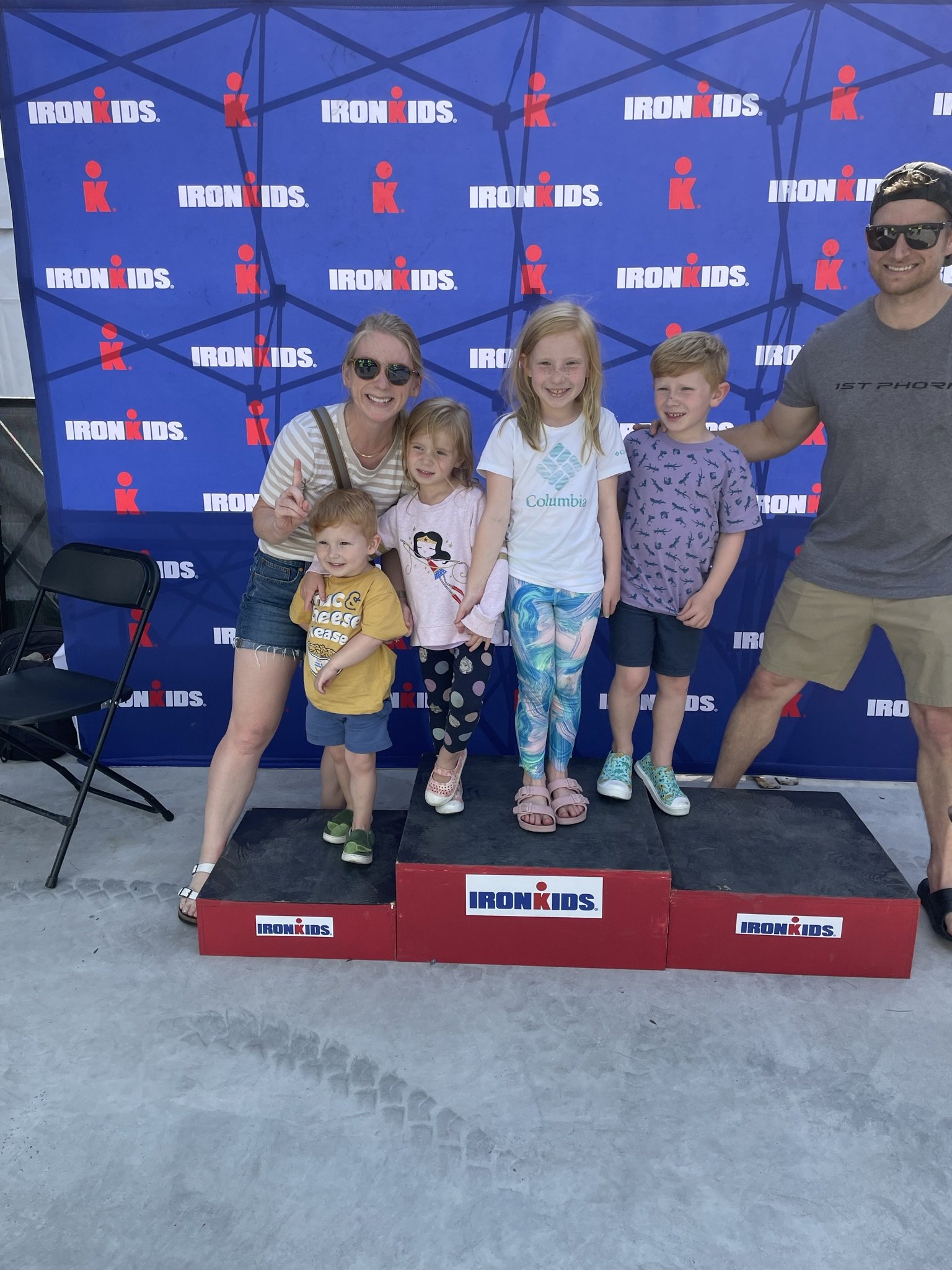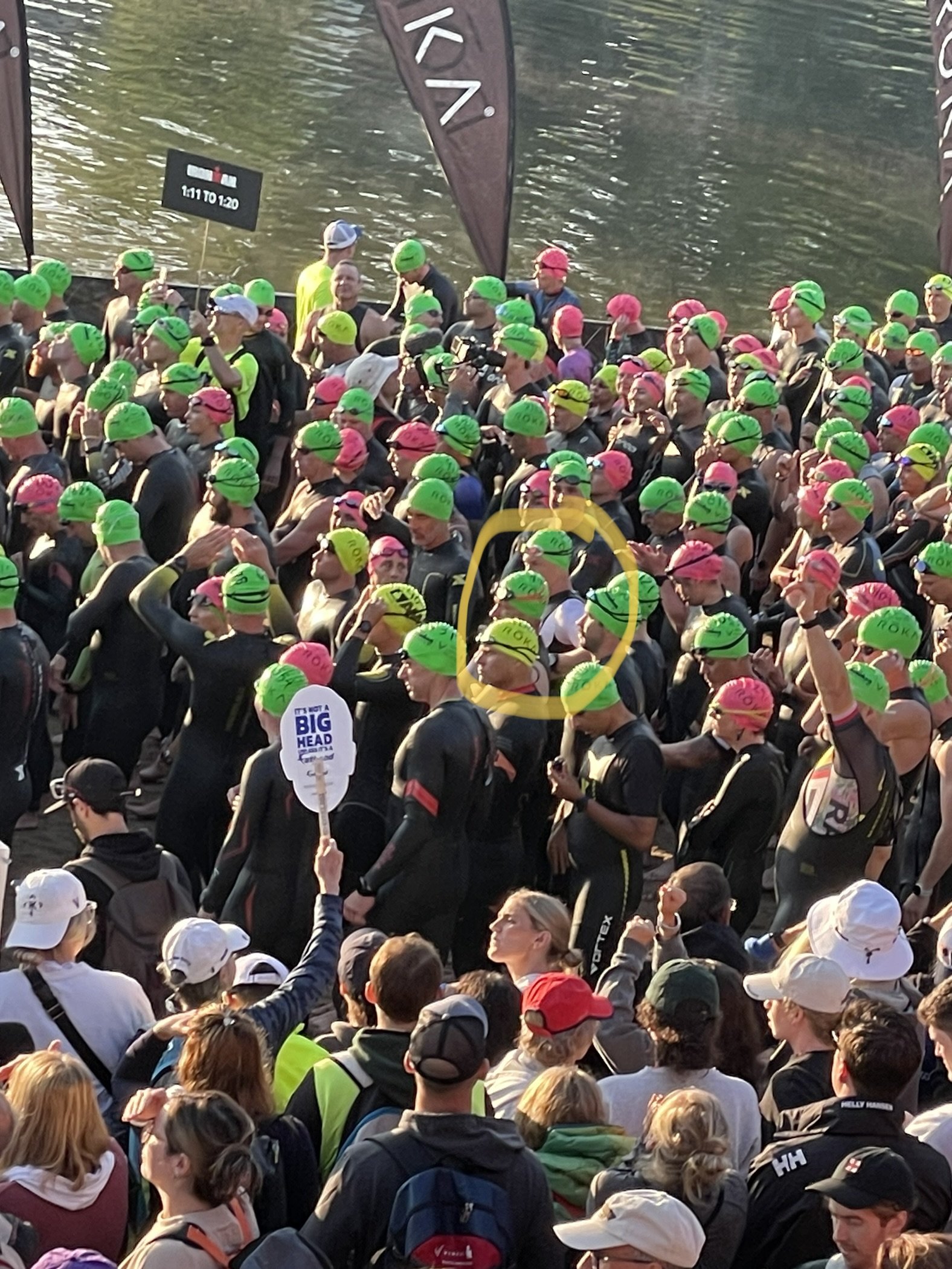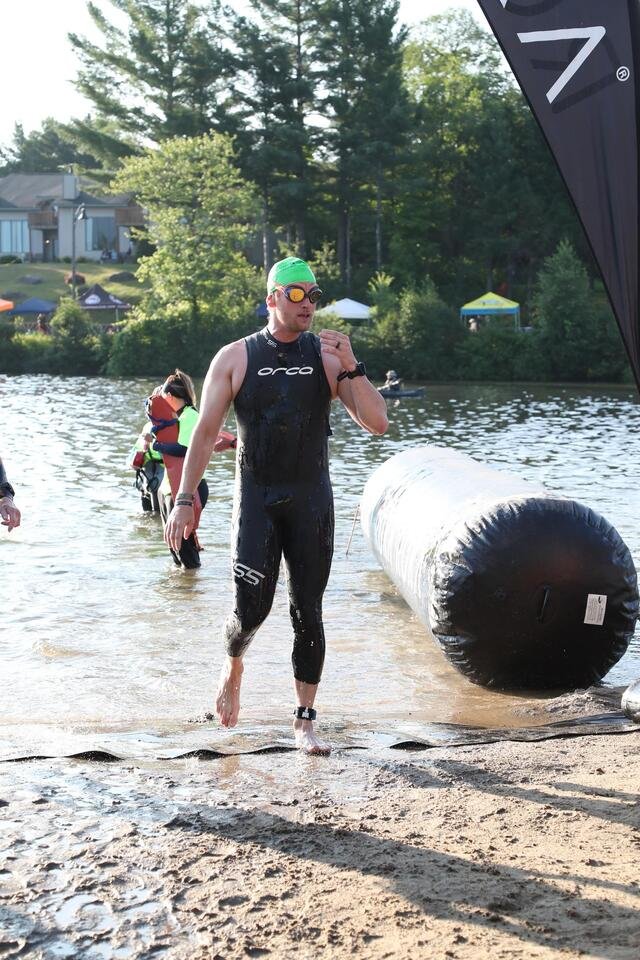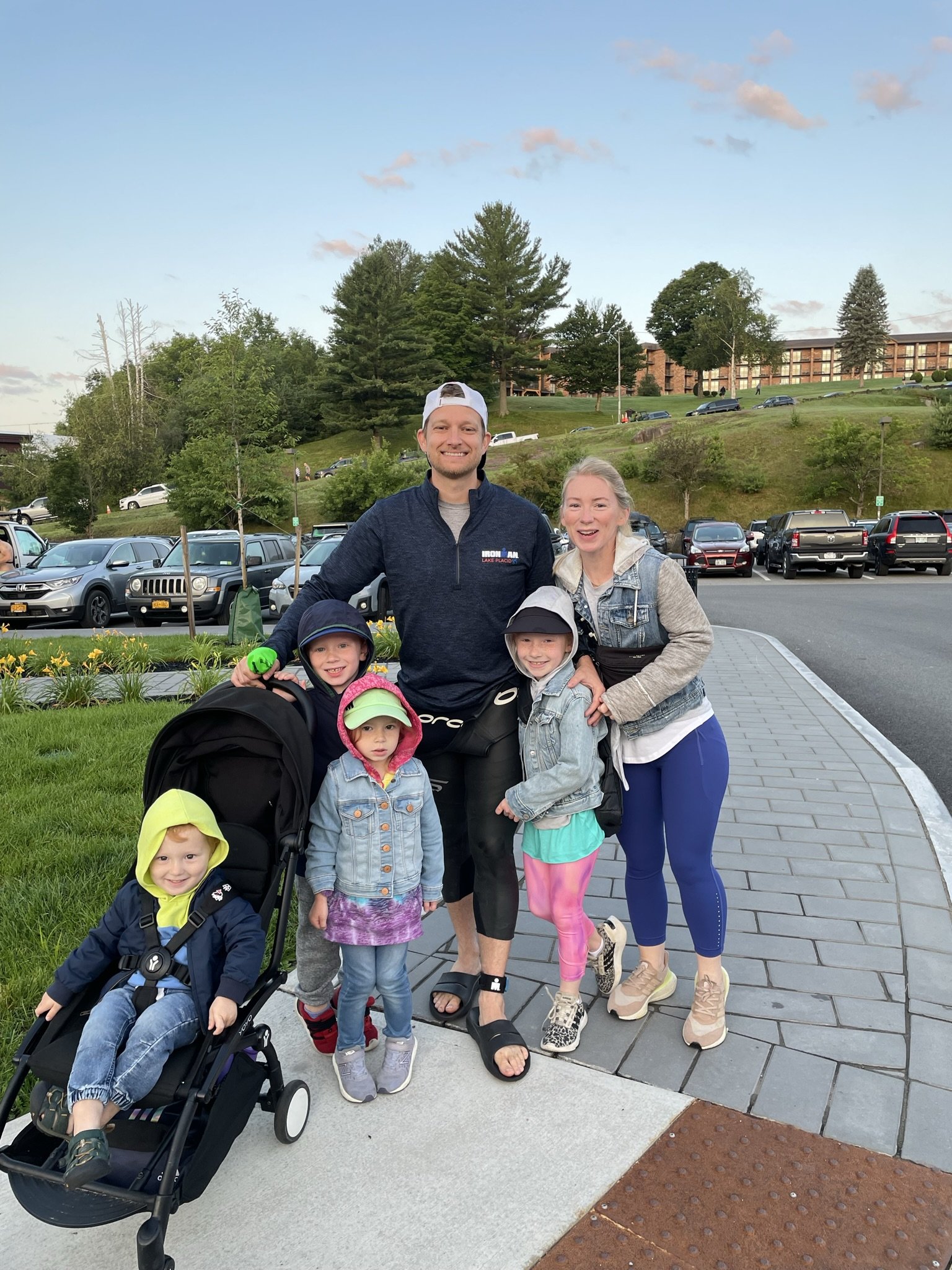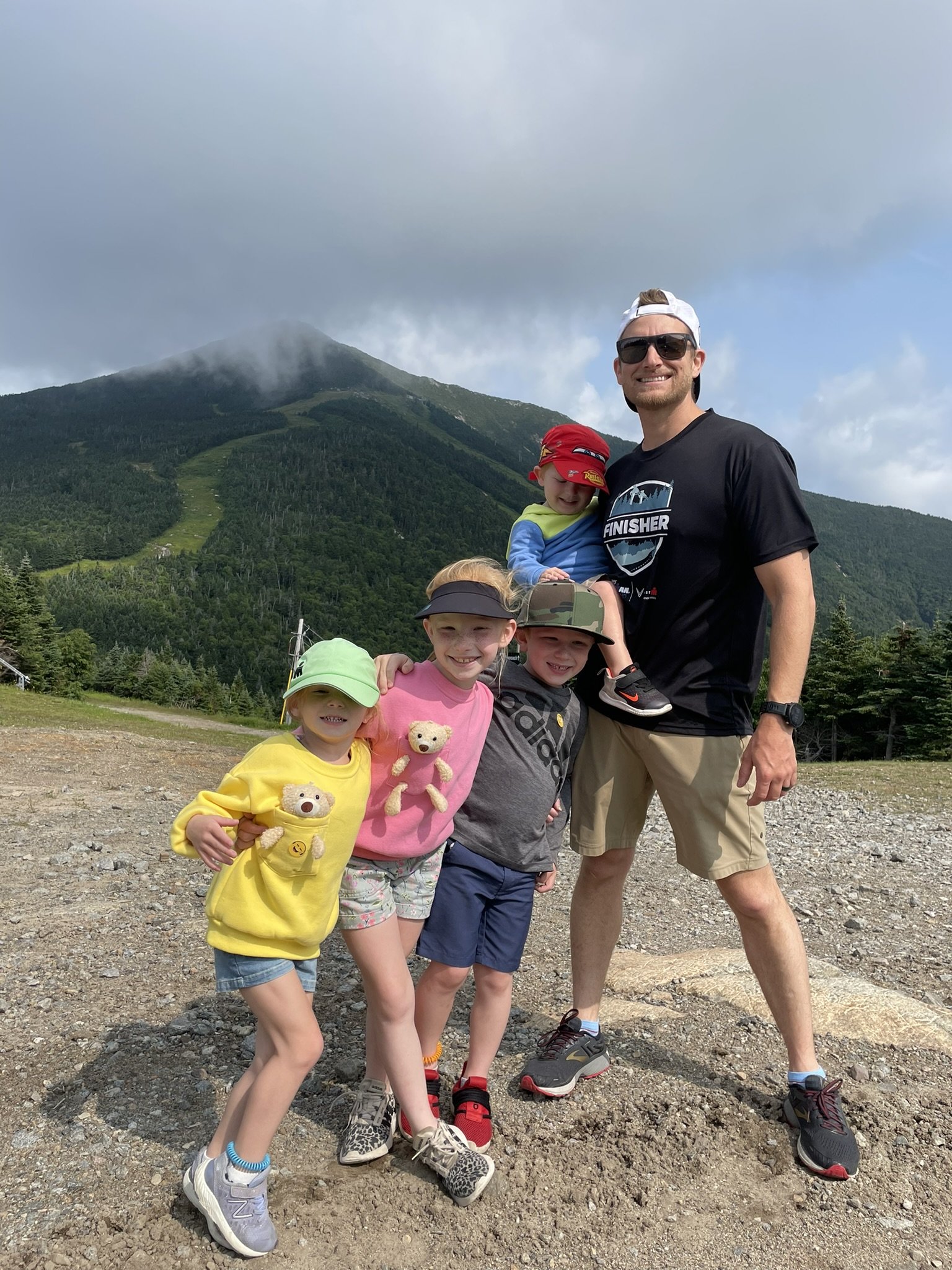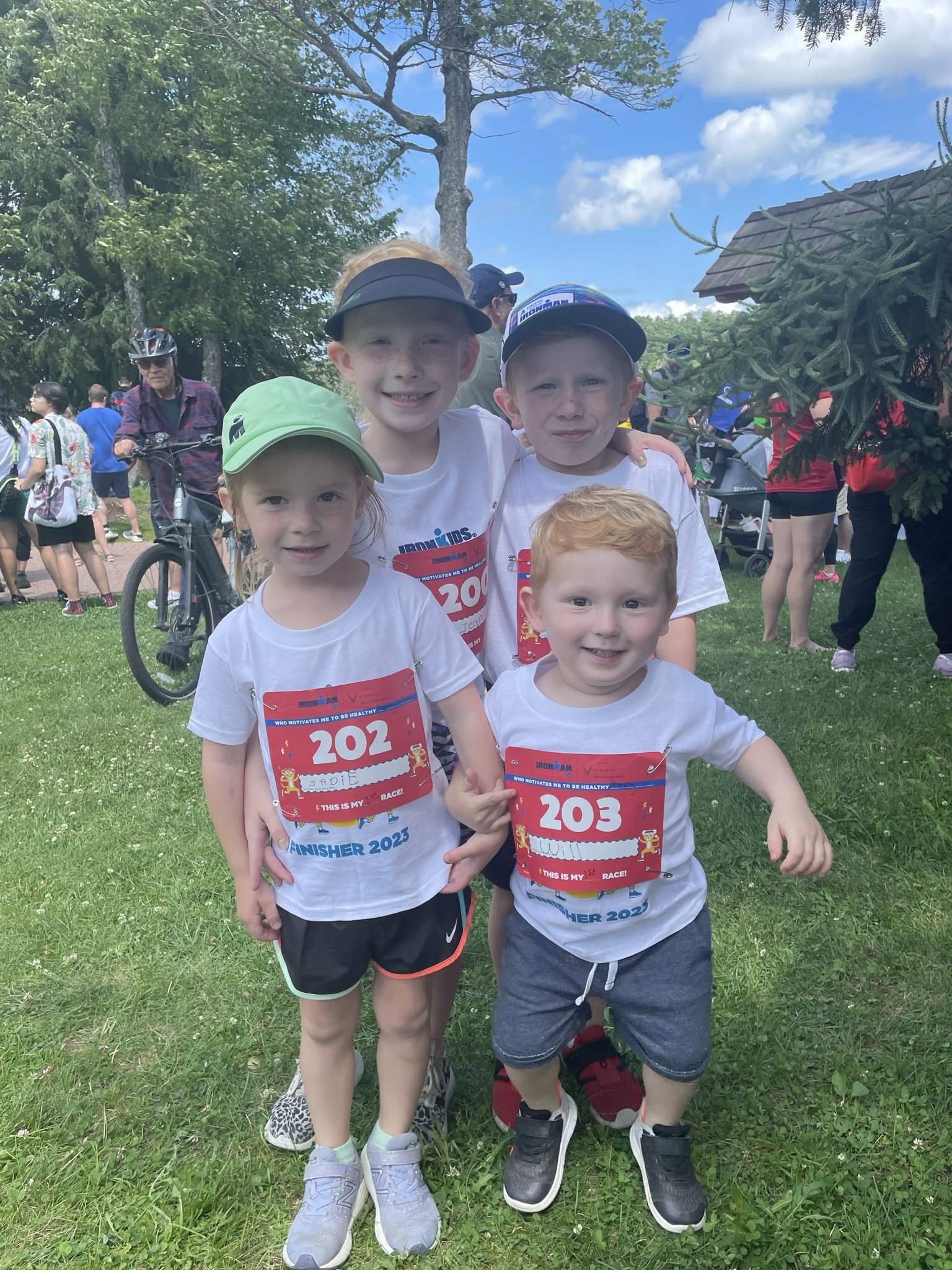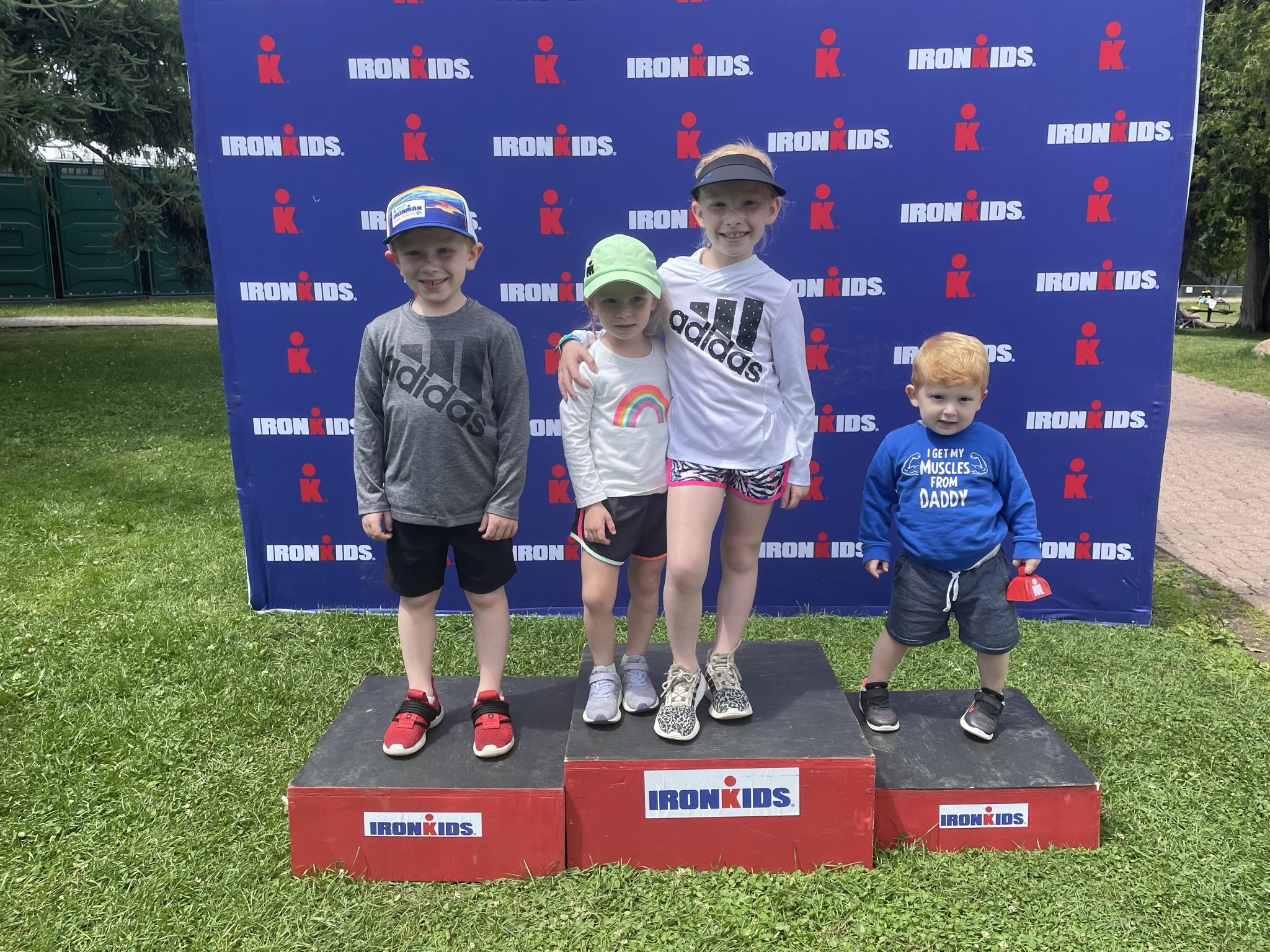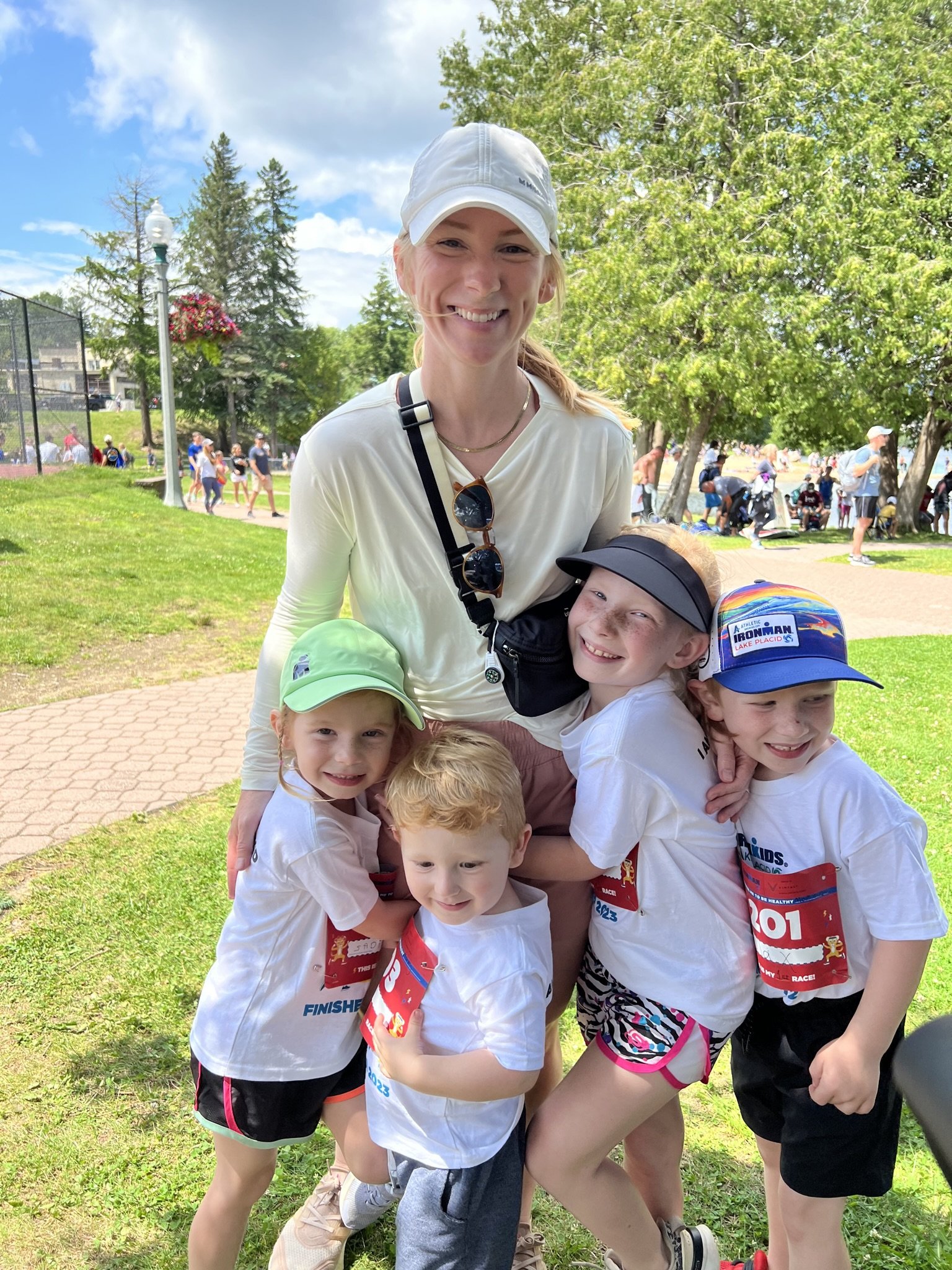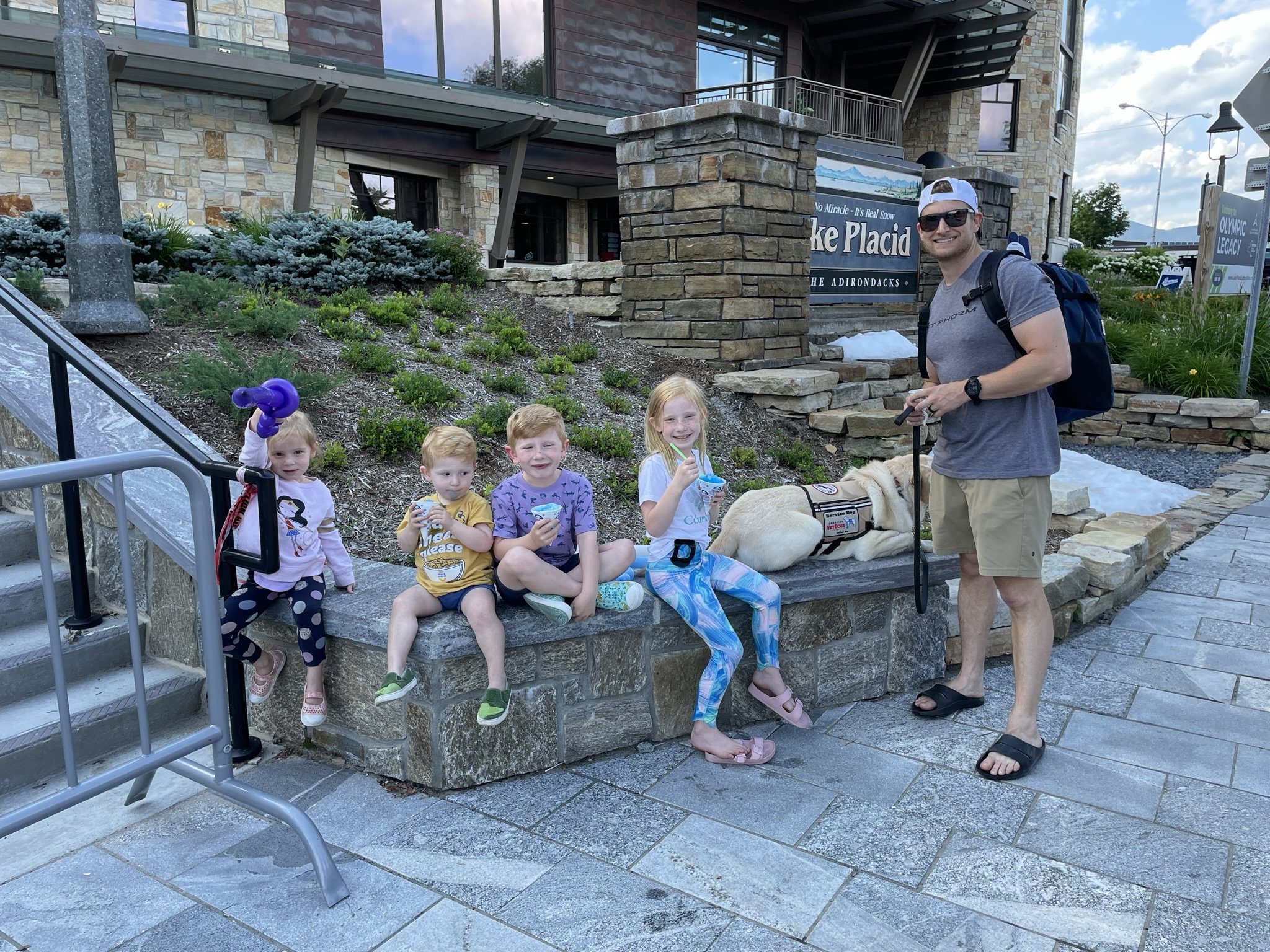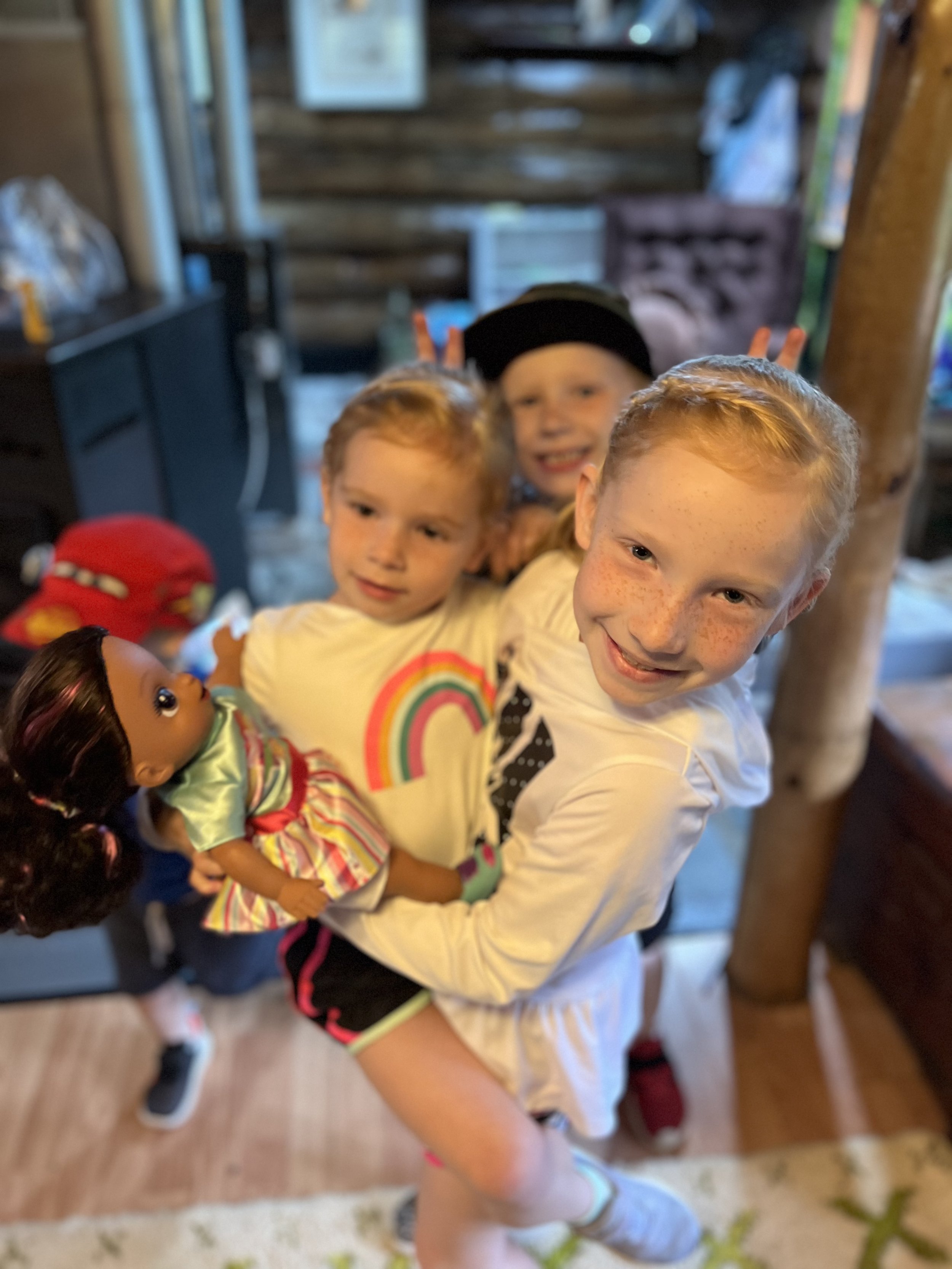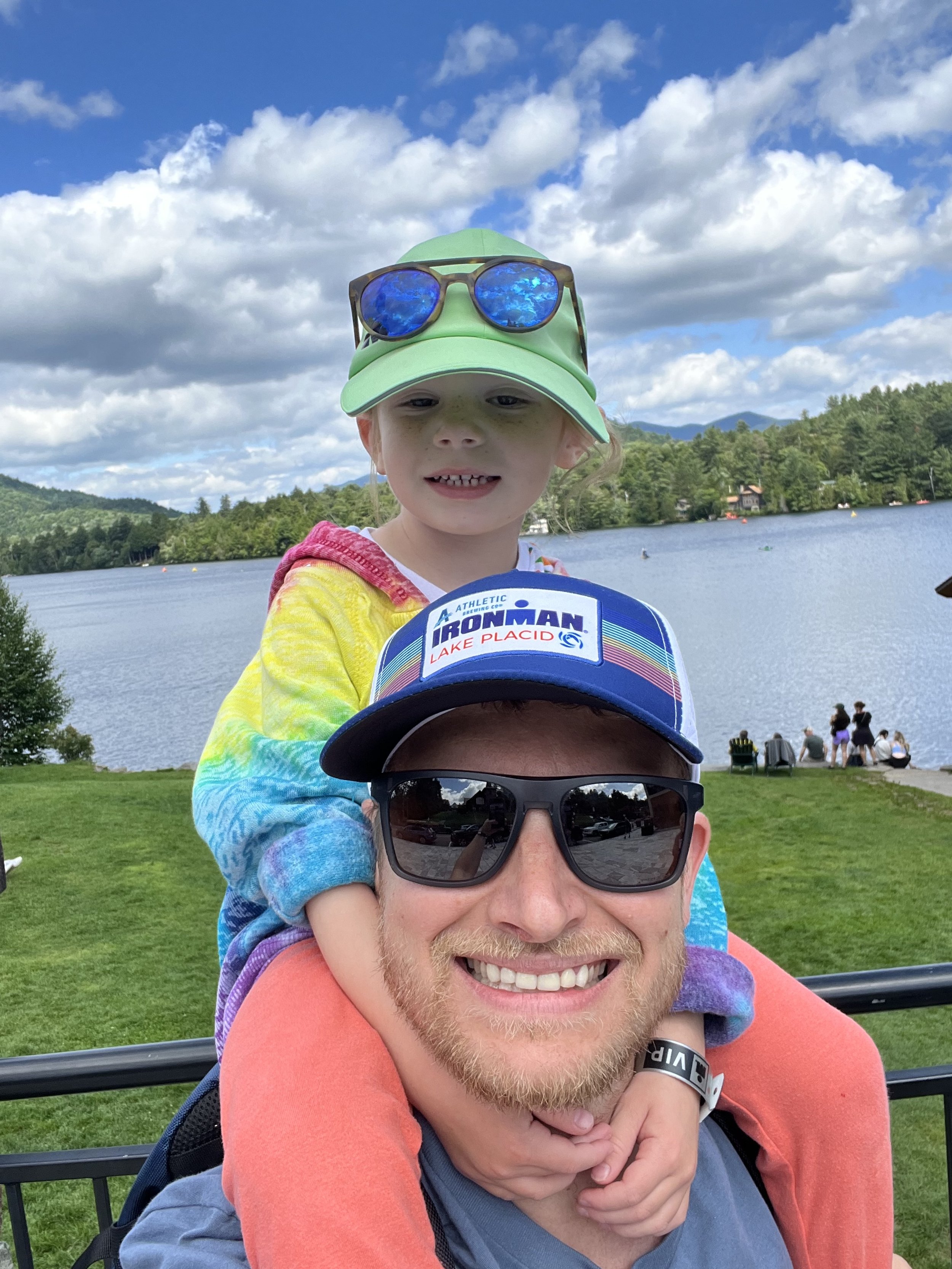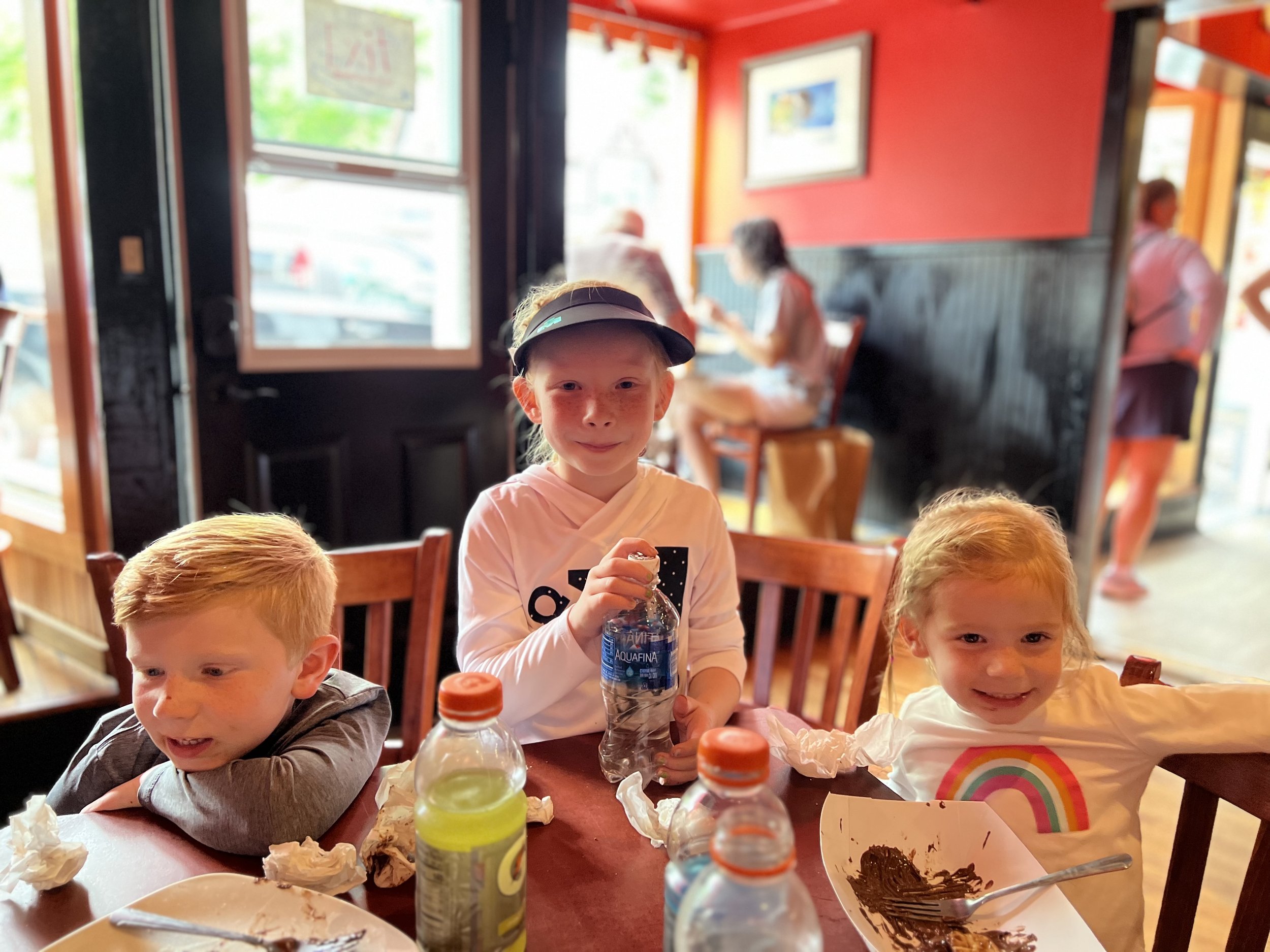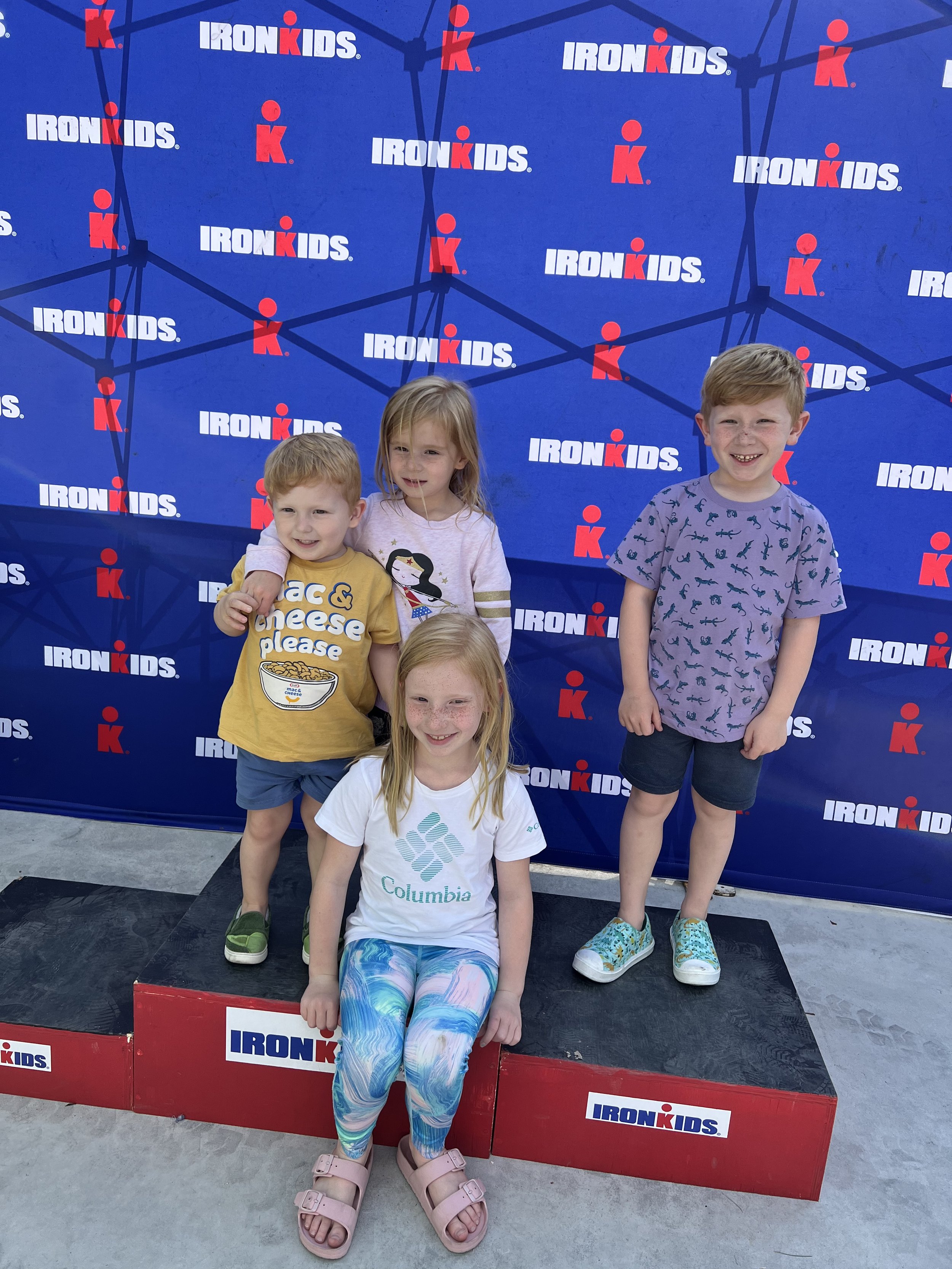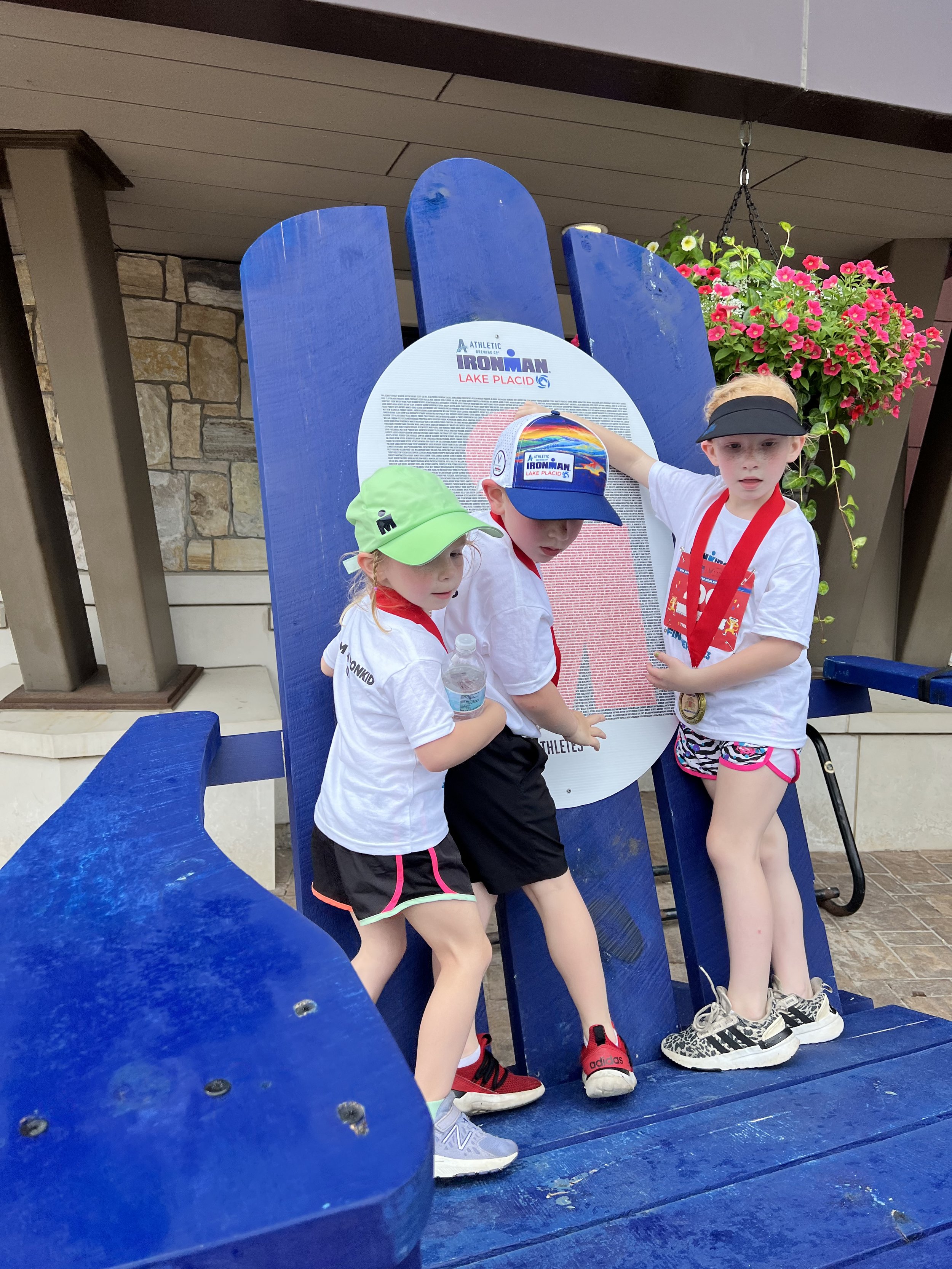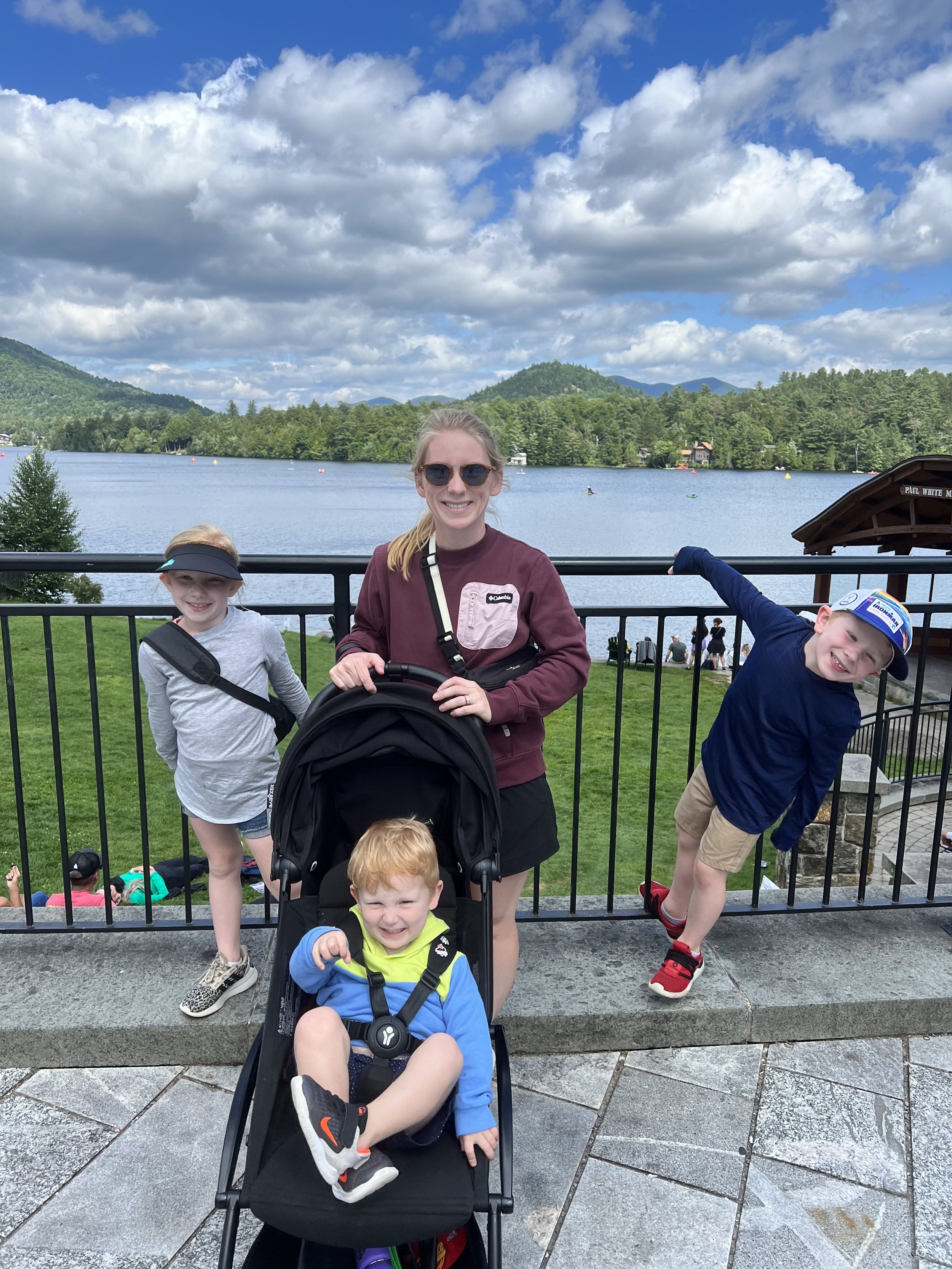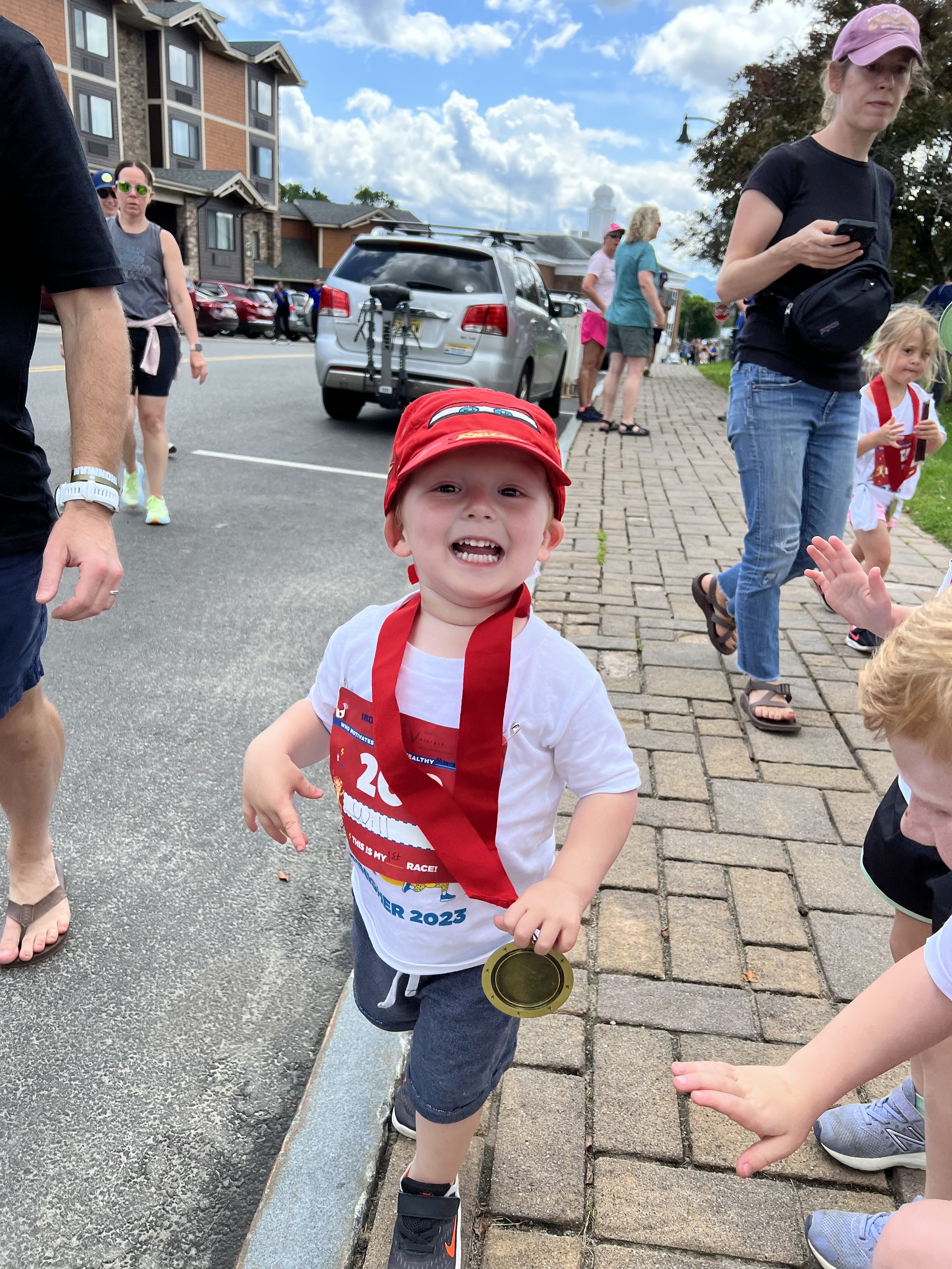My First Ironman Journey: Triumphs and Trials at Iron Man Lake Placid
The Iron Man Lake Placid race, renowned for its breathtaking landscape and challenging course, stands as a pinnacle achievement in the world of endurance sports. Nestled in the heart of the Adirondacks, Lake Placid is not just a picturesque town but a historic site, having hosted two Winter Olympics. Its Iron Man race, held on July 23, 2023, continued this legacy of athletic excellence, drawing athletes from around the globe to test their limits. As I write this post, months after the race and at the culmination of my race season, I find myself reflecting on a journey that was as transformative as it was challenging.
My decision to write about this experience was delayed, fueled by a desire to first absorb and understand the full spectrum of what I had undergone. It's one thing to participate in such a demanding event; it's quite another to distill its essence into words. Now, with the season behind me and the emotions and lessons processed, I am ready to share my story.
My journey to Lake Placid was an unconventional one. Unlike many who ease into the world of triathlons, starting with shorter distances and gradually building up, I leapt directly into the deep end. Choosing a full Ironman race as my first triathlon experience might have seemed audacious, but it felt right for me. The decision was driven by a mix of naivety and a deep-seated belief in challenging my limits. Lake Placid, known for its hilly course, presented an even greater challenge, and I was drawn to it, eager to test my mettle against one of the most demanding courses in the Ironman circuit.
However, this decision came with its share of challenges. My training, spanning about six months, was self-devised. I bypassed traditional training plans, opting instead for a regimen of high-intensity workouts crafted on intuition rather than structured guidance. This approach, while reflective of my general attitude towards challenges, was perhaps my first misstep. Training for an Ironman is a delicate balance of endurance, strength, and technique, something I learned the hard way. My inconsistent training schedule, coupled with a lack of focus on key heart rate zones, was less than ideal. Fortunately, my body was resilient, sparing me from overuse injuries despite the rigorous demands I placed on it.
The journey to Lake Placid from Ohio was as much a part of the Iron Man experience as the race itself. My family and I embarked on this adventure in our trusty minivan, a vehicle not typically associated with athletic escapades but one that symbolized the essence of our family: adventurous, unpretentious, and always ready for a challenge. The van was crammed with my wife, our four children, our enthusiastic dog, and amidst all the chaos, my disassembled bike, ingeniously squeezed into the aisle. This logistical puzzle was a prelude to the many challenges I would face in the race. It was during this cramped journey that I realized the importance of proper equipment, a lesson that culminated in the immediate purchase of a trailer hitch post-race - a simple yet significant improvement for future endeavors.
Our accommodation was a beautiful secluded cabin, located about 45 minutes from Lake Placid. This choice was a blend of strategic isolation and scenic tranquility, offering a peaceful retreat from the pre-race nerves. The cabin, nestled in the wilderness, became a haven for family bonding, with hiking adventures and moments of serenity. However, its distance from the race start posed a logistical challenge on race day, adding to the already high stress levels.
The training regimen I followed in the months leading up to the race was a self-devised approach, prioritizing intensity over structured endurance building. This method, while reflective of my go-getter attitude, overlooked key aspects of Ironman preparation. My training was peppered with inconsistency, not adhering to a set schedule and lacking focus on crucial heart rate zones. The high-intensity workouts, although improving my physical strength, did not fully prepare me for the endurance demands of a full Ironman. This approach was a gamble that, while it didn't result in injury, certainly set the stage for the humbling experiences I encountered during the race.
Lake Placid itself, is a city that captures the heart with its natural beauty and Olympic legacy. As my family and I explored its charming streets and scenic surroundings, the city's allure became a soothing backdrop to the pre-race jitters. The town, steeped in athletic history, resonated with a spirit of endurance and achievement, echoing the essence of the Iron Man race it was about to host.
Our days leading up to the race were filled with explorations and discoveries. The serene Mirror Lake, soon to be the battleground for my swimming challenge, was a tranquil haven, its calm waters reflecting the surrounding mountains and the clear blue sky. These moments of family fun amidst the natural splendor of Lake Placid provided a wonderful distraction.
Downtown Lake Placid, with its quaint shops and local eateries, offered a delightful escape from the rigors of race preparation. We wandered through the streets, soaking in the vibrant atmosphere and the friendly chatter of locals and visitors alike. Each store we entered, each meal we shared, was an opportunity to connect with the community, to feel a part of something bigger than the race itself.
These explorations around Lake Placid were not just leisurely diversions; they were integral to my race experience. They allowed me to bond with my family, to appreciate the beauty of the setting, and to draw inspiration from the city's Olympic spirit. As I immersed myself in the charm of Lake Placid, I found a sense of calm and confidence.
The Iron Man Race Expo in Lake Placid was amazing. As I stepped into the expo, the first thing that struck me was the sheer scale of it all. Rows upon rows of vendors, the latest in triathlon gear and nutrition, and a buzzing crowd of athletes and spectators created an electrifying atmosphere. The realization that I was part of this massive community of athletes, all united by a common goal, was both humbling and exhilarating.
Interacting with other competitors was an experience in itself. I found myself amidst seasoned triathletes and first-timers, each with stories that were both inspiring and instructive. Conversations flowed easily, bridging the gap between strangers. Veterans of the sport shared tips and experiences, while newcomers like myself listened eagerly, absorbing every piece of advice. This camaraderie was a testament to the inclusive spirit of the Ironman community. It was comforting to know that despite the individual nature of the race, there was a collective spirit that bound us all.
However, amidst this vibrant atmosphere, I encountered my first set of challenges. In my pre-race naivety, I had overlooked a crucial aspect of race preparation - the gear bag logistics. It was only after arriving at the expo that I realized the necessity of dropping off race day gear bags at the starting area the day before. This oversight meant an unplanned 45-minute drive back to our cabin, a stressful addition to the already packed schedule.
Additionally, I hadn't considered the possibility of inclement weather affecting my gear. A brief storm on race day resulted in my running gear bag getting soaked. My running shoes and socks, which I had meticulously chosen for comfort and performance, were now drenched. This unforeseen mishap was a stark reminder of the unpredictable nature of outdoor endurance events and the importance of meticulous planning and preparation.
Then there was the Iron Kids race event, a charming precursor to the main Iron Man race. It was a wonderful experience for my kids. As a parent, seeing my children participate in the event brought a unique joy and pride. This event was not just about introducing kids to the world of triathlon; it was about instilling values of health, fitness, and the spirit of friendly competition at a young age.
Each of my children took part in races tailored to their ages. My three oldest children faced a one-mile run. The youngest, our toddler, participated in the adorable "diaper dash," a 23-yard sprint that was as much a crowd-pleaser as it was a milestone for our little one. Watching them participate with such enthusiasm, mirroring the serious athletes in their own youthful way, was a sight to behold.
The race setup for the Iron Kids event was meticulously organized, ensuring safety and fun. The courses were clearly marked, and the distances were appropriate for the different age groups. Most importantly, the atmosphere was electric with encouragement and support. Parents and spectators cheered every child, making each little athlete feel like a star. The organizers did an excellent job of creating an environment that was competitive yet nurturing, ensuring that the children's first brush with racing was a positive and memorable experience.
Receiving their medals at the finish line, my children beamed with a sense of accomplishment. The medals were not just tokens of participation; they symbolized effort, perseverance, and the joy of crossing a finish line.
Finally, as race day dawned I faced a mix of anticipation and nervous energy. The excitement of the event, coupled with the natural anxiety of facing my first triathlon, meant sleep was elusive the night before. Lying awake, I pondered the challenge ahead, the journey that had brought me here, and the daunting task of swimming, biking, and running through one of the most rigorous courses in the Ironman series.
The early morning start added to the surreal quality of the day. Waking up around 3:30 AM, we embarked on the 45-minute drive to the race start. In these quiet, dark hours, my mind raced with thoughts and strategies, but also a fundamental question – was I truly prepared?
In what would turn out to be a significant misstep, I altered my race day nutrition plan in the eleventh hour. About 30 minutes before the swim start, I decided to consume a peanut butter and jelly sandwich, a deviation from my usual pre-race meal. Little did I know, this decision would have repercussions later in the race.
The swim at Mirror Lake was set against a backdrop of serene beauty. The lake, known for its calm and clear waters, was a sight to behold in the early morning light. As the race commenced, the once peaceful lake transformed into a flurry of activity. Swimmers of varying speeds entered the water in phases, creating a dynamic and challenging environment.
My inexperience in open water swimming became apparent almost immediately. It was my first time donning a wetsuit, my first time in open water, and my first time swimming amidst a large group of athletes. The calm lake quickly turned into a tumultuous sea of arms and legs, an experience far removed from the solitary laps in a pool.
The swim was a test of endurance and mental fortitude. The course, consisting of two loops in the lake, required swimmers to briefly exit the water after the first loop before diving back in. The first loop went surprisingly well, given my lack of open water experience. However, as I plunged back into the lake for the second loop, things took a turn.
About 50 meters into the final lap, a wave of nausea hit me. The abrupt transition from vertical to horizontal movement, compounded by the earlier nutrition mistake, wreaked havoc on my system. Vomiting while treading water amidst hundreds of other swimmers was a low point, both physically and mentally. It was a battle to stay afloat and focused while my body rebelled against the situation.
In that moment, I contemplated seeking help from a nearby lifeguard, but my competitive spirit wouldn't allow it. Quitting was not an option. Despite the setback, I gathered my resolve and continued. After a grueling 10-15 minutes, the nausea subsided enough for me to complete the swim.
Emerging from Mirror Lake, I was physically drained but mentally victorious. I had faced and overcome my first major hurdle of the race. The swim portion of the Ironman had tested me in ways I hadn't anticipated, but it also taught me a crucial lesson about endurance sports – it's as much a mental game as it is a physical one.
Emerging from the swim, heart still racing and limbs heavy with exertion, I faced the first transition of the race. The transition from swim to bike, a segment I had not given much thought to in my training, presented unexpected challenges. The path from the lake to the bike racks was longer than anticipated, almost a quarter mile, which added to the fatigue. In the changing tent, I quickly switched into my biking gear, the adrenaline of the race mixing with the urgency of the transition.
Once on the bike, the true essence of the course revealed itself. The 112-mile bike route, renowned for its scenic vistas and demanding terrain, was both awe-inspiring and daunting. The course wound through the picturesque Adirondack Mountains, offering stunning views that were a balm to the tired mind but also a reminder of the grueling hills that lay ahead.
My personal struggles on the bike course were numerous. Despite my overall fitness, I quickly realized that my training had been inadequate for the challenges of a hilly course. The lack of focused hill training became apparent as I struggled with the climbs, the weight of my aluminum-framed road bike not helping matters. I had naively believed that determination and physical strength would compensate for specific training and the right equipment – a misconception that was being rectified with each uphill stretch.
The famed Keene descent on the course was a moment of respite and thrill. Reaching speeds of 45 miles per hour, the descent was a rush of exhilaration, but it also marked the start of the more challenging part of the course. My lack of pacing strategy began to show. Caught up in the race day excitement, I had expended too much energy too soon, a rookie mistake that would cost me dearly in the later stages.
As the miles ticked by, my legs began to feel the strain. What started as minor cramps in my quads around the 75-mile mark escalated to full-blown muscle spasms, rendering every pedal stroke a battle against pain. I hadn't anticipated the toll that sustained climbing and riding would take on my body. The frequent stops at aid stations for stretching became necessary, slowing my pace but providing much-needed relief.
Finishing the bike segment was an achievement laced with relief and exhaustion. My legs were spent, and the realization that a full marathon still awaited me was daunting. The bike course had been a humbling teacher. It taught me the importance of specific training, the right gear, and the need for a strategic approach to such a demanding race. As I transitioned to the run, I carried with me not just the physical weariness from the bike course but also valuable lessons for the future.
The transition from the bike to the run brought a new set of challenges. After completing the bike segment, I was greeted by the disheartening sight of my soaked running gear. The brief storm earlier in the day had drenched my shoes and socks, a complication I hadn't foreseen.
As I set out on the marathon run, my spirits were dampened, much like my gear. The 26.2 miles ahead loomed large, a daunting task given the state of my legs, already taxed from the swim and bike segments. The start of the run course, marked by a descent, was especially brutal on my quads, which screamed in protest with each step. The pain was immediate and intense, a clear signal that the marathon would be as much a mental battle as a physical one.
The run quickly evolved into a test of endurance and willpower. Barely a mile in, my quads locked up, refusing to bend, turning each stride into a jarring impact. The pain was unlike anything I had experienced, and for a moment, I feared the worst - that my muscles had given out entirely. However, quitting was never an option. Drawing on my military training and driven by sheer determination, I shifted to a road march pace, a strategy that offered a compromise between speed and sustainability.
Adopting this marching rhythm, I managed to maintain a pace of around 13 minutes per mile. It wasn't fast, but it was steady, and in a race like this, consistency is key. The remote stretches of the course were eerily quiet, leaving me alone with my thoughts and the relentless pain in my legs. These moments were a true test of character, pushing me to dig deep and find reserves of strength.
Despite the physical agony, there was a sense of camaraderie on the course. Fellow athletes, volunteers, and spectators provided much-needed encouragement, their cheers and support a lifeline in the darker moments. This communal spirit, so inherent to the Ironman experience, was a constant source of motivation.
The final miles of the marathon were a blur of pain, fatigue, and determination. With each step towards the finish line, the cheers grew louder, the energy of the crowd infusing me with a final burst of strength. Crossing the finish line was an experience that transcended physical exhaustion and tapped into a deep well of emotion. After enduring hours of relentless physical and mental challenges, the sight of the finish line was both surreal and overwhelmingly gratifying. The crowd's cheers, the bright lights, and the announcer's voice proclaiming each finisher's arrival created an atmosphere charged with excitement and accomplishment.
As I approached the end, every step was a mix of agony and ecstasy. My legs, pushed beyond their limits, barely managed a trot, but I remained excited. The pain that racked my body paled in comparison to the overwhelming sense of achievement. Completing an Ironman, especially under such trying circumstances, was a testament to my resilience and capacity to endure.
However, the physical toll of the race quickly became apparent. Shortly after crossing the finish line, I experienced a post-race collapse, likely due to dehydration and electrolyte imbalance. The world spun, and I found myself grappling with lightheadedness and an overwhelming sense of fatigue. It was a scary moment, not just for me but for my family, who had been my steadfast support throughout this journey. Their concern was evident as they gathered around me, their faces etched with worry.
Thankfully, the collapse was brief. After some rest and medical attention, I managed to recover enough to rejoin my family. The joy of reunion was tinged with relief and exhaustion. My children's faces lit up with pride and happiness, a sight that revitalized my weary soul. The support of my family, their unwavering belief in me, had been a crucial pillar of strength throughout the race, and seeing them at the finish line was the perfect culmination of this arduous journey.
The aftermath of the race was a time for reflection and recovery. The physical pain in my legs persisted, rendering me unable to walk properly for days. We spent the following day at the cabin, a much-needed respite for my battered body and a chance to relive the race's highlights with my family. It took about two weeks for the pain to fully subside, a period during which I not only recuperated physically but also processed the entire experience mentally.
Reflecting on my journey, I find that the race was much more than a test of physical endurance; it was a profound learning experience, offering insights that extend well beyond the realm of athletic competition. Each stage of the race, each challenge encountered, brought with it valuable lessons that have reshaped my approach not only to triathlons but also to life's myriad challenges.
One of the key takeaways from this race was the undeniable importance of proper training. My self-devised, high-intensity training regimen, while it kept me in good general shape, did not adequately prepare me for the specific demands of an Ironman race. The lack of structured training, particularly in crucial areas such as endurance, pacing, and heart rate zone management, was a significant oversight. This experience underscored the need for a more methodical and disciplined approach to training, one that aligns with the unique requirements of the event.
Nutrition, I learned, plays a pivotal role in performance, especially in endurance sports. The decision to alter my race day nutrition at the last minute was a critical error, one that significantly impacted my swim. This incident highlighted the importance of not only planning a nutrition strategy in advance but also rigorously testing it during training to ensure it suits one's body and the demands of the race. Understanding and respecting the nutritional needs of my body under such extreme conditions is a lesson I will carry forward.
The race also emphasized the importance of the right gear. From the complications of transporting my bike in a cramped minivan to the challenges posed by my less-than-ideal bike choice and the soaked running gear, each instance was a lesson in the significance of appropriate, reliable equipment. Investing in a triathlon-specific bike, considering gear logistics, and preparing for all weather conditions are aspects I eventually paid more attention to in my future races.
Additionally, this race taught me the value of adaptability and mental resilience. Whether it was dealing with unexpected physical discomfort, weather-related issues, or equipment challenges, the ability to stay mentally focused and adaptable was crucial. The race reinforced that mental toughness is as important as physical strength in overcoming the hurdles of such a demanding event.
Lastly, this race reaffirmed the importance of a strong support system. I realize that none of this would have been possible without the unwavering support and incredible strength of my wife. She was the unsung hero of this adventure, her role pivotal yet often understated amidst the spectacle of the race.
Throughout the months of rigorous training, her support was the bedrock upon which my preparation was built. She took on the task of managing our household, often single-handedly, while I was consumed with long training sessions. Her understanding and encouragement during those endless hours of swimming, cycling, and running were invaluable.
But it was on race day that her remarkable resilience and capability truly shined. In a small town swarming with spectators and athletes, she navigated the chaos with the calmness of a seasoned pro. Managing four young children in such an environment is no small feat. It requires a blend of patience, organization, and sheer determination – qualities that she possesses in abundance.
Her efforts to ensure that our children were not just present, but actively involved in the event, speaks volumes of her commitment to our family's shared experiences. She orchestrated their movements through the crowded streets of Lake Placid, ensuring they were at each transition point to offer their cheers and smiles – boosts of encouragement that were my lifeline during the toughest moments of the race.
The work and effort she put into mobilizing our little crew around the Adirondacks was nothing short of miraculous. Her day was, in many ways, as demanding as mine. Juggling the needs of our children, keeping track of my progress, and navigating the logistics of the race venue required a level of endurance and mental toughness that parallels the demands of Ironman racing.
In recognizing my own accomplishment, it's crucial to acknowledge that it was her unwavering support that made it all possible. Her sacrifices, often silent and unnoticed, were the foundation upon which my dream was realized. This journey, while embarked upon individually, was a collective effort, with her role being as central as mine.
So, as I share my experiences and the lessons learned, I want to give a heartfelt shoutout to my incredible wife. Her love and untiring support were the unsung yet vital elements of my Ironman journey. This achievement is as much hers as it is mine, and I am profoundly grateful for everything she has done.
Looking ahead, the journey is far from over. This initial race was just a stepping stone to my next races. My next endeavor, I took on Iron Man Chattanooga. Armed with the lessons learned from Lake Placid, I approached this race with a renewed sense of purpose and preparation, which paid off in a very positive way.
To my readers and aspiring triathletes, I offer this encouragement: the path to completing an Ironman is demanding, but it is within your reach. Embrace the journey with all its highs and lows. Train diligently, respect your body's needs, and equip yourself properly. Most importantly, believe in your ability to endure and overcome. Remember, every champion was once a contender that refused to give up.
Stay tuned for my next post, where I will delve into my experience at the Iron Man Chattanooga. Together, let's continue to push boundaries and redefine what's possible.








